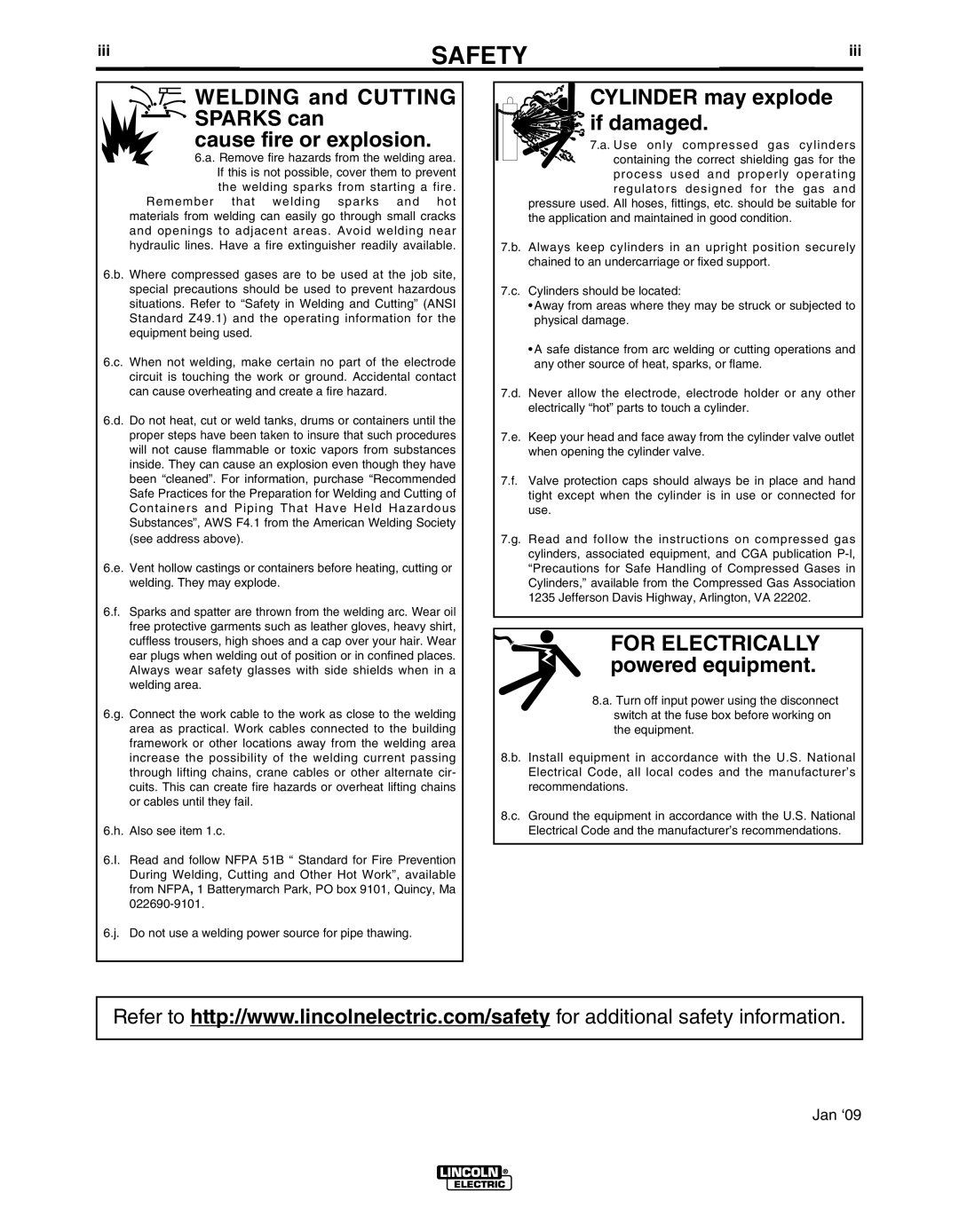IM732-B specifications
The Lincoln Electric IM732-B is a cutting-edge inverter-based multi-process welding machine designed for both professional welders and industrial applications. It offers an array of features that enhance its versatility, efficiency, and ease of use, making it an indispensable tool in various welding environments.One of the standout features of the IM732-B is its ability to perform multiple welding processes. This machine seamlessly transitions between MIG, TIG, and stick welding, allowing users to effortlessly switch techniques depending on the job requirements. This flexibility makes it suitable for a diverse range of materials, including steel, stainless steel, and aluminum.
Equipped with advanced inverter technology, the IM732-B provides superior arc stability and reduced spatter, resulting in cleaner welds and less rework. This technology also contributes to the machine’s lightweight and compact design, making it highly portable for on-site jobs or restricted workspace environments. Its built-in thermal overload protection ensures that the machine operates safely and maintains optimal performance even under demanding conditions.
The digital display and intuitive user interface of the IM732-B simplify the setup and adjustment processes. Users can easily monitor welding parameters and make real-time adjustments, enhancing precision and control during the welding process. Additionally, the machine features a variety of preset welding programs tailored for different materials and applications, enabling even novice welders to achieve professional results.
Another notable characteristic of the Lincoln Electric IM732-B is its energy efficiency. The inverter technology consumes less power compared to traditional welding machines, reducing operational costs and making it an eco-friendly choice for businesses aiming to minimize their carbon footprint.
Durability is also a key aspect of the IM732-B’s design. Constructed with rugged materials and components, it is built to withstand the rigors of daily use in challenging environments. This reliability translates to lower maintenance costs and a longer service life.
In conclusion, the Lincoln Electric IM732-B stands out as a versatile and technologically advanced welding machine, catering to the needs of modern welders. With its multi-process capabilities, superior arc performance, user-friendly interface, energy efficiency, and robust construction, it is a trusted choice for both industrial applications and professional welding projects.

